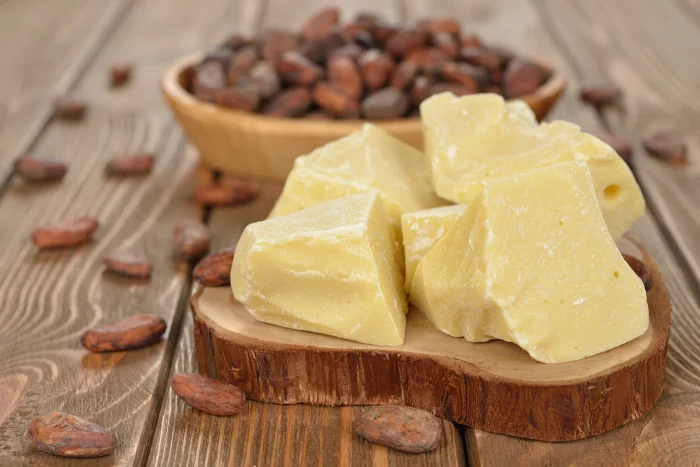Butter is a common ingredient in many recipes, from baking to cooking. However, there are various reasons why someone might need a substitute. These could include dietary restrictions, health concerns, or simply running out of butter. Fortunately, there are many alternatives to butter, each suited to different purposes. This guide explores various options to replace butter, highlighting their best uses and benefits.
Why Replace Butter?
Before diving into the substitutes, it’s important to understand why you might need a replacement. Common reasons include:
Health concerns: Butter is high in saturated fats, which can raise cholesterol levels.
Dietary preferences: Vegans and those who are lactose intolerant avoid butter.
Allergies: Some people are allergic to dairy products.
Practicality: Running out of butter and needing a quick alternative.
Each substitute has unique characteristics, so it’s essential to choose one based on your specific needs.
Oil Substitutes
Olive Oil
Olive oil is a healthy and versatile butter substitute. It’s rich in monounsaturated fats, which are good for heart health. Use it in:
Cooking: Ideal for sautéing vegetables or as a base for sauces.
Baking: Works well in cakes and muffins but may alter the flavor slightly.
Tip: Use three-quarters of the amount of butter required. For example, if a recipe calls for 1 cup of butter, use 3/4 cup of olive oil.
Coconut Oil
Coconut oil is another excellent substitute, particularly for baking. It has a mild coconut flavor and is solid at room temperature, making it similar to butter in texture.
Best for: Cookies, cakes, and other baked goods.
Health benefits: Contains medium-chain triglycerides (MCTs), which may boost metabolism.
Tip: Use a 1:1 ratio when replacing butter with coconut oil.
Vegetable Oil
Vegetable oil is neutral in flavor and widely available. It’s suitable for:
Cooking: Great for frying or sautéing.
Baking: Works in recipes where butter’s flavor is not essential, like brownies.
Tip: Substitute butter with an equal amount of vegetable oil.
Dairy-Based Alternatives
Yogurt
Yogurt can replace butter in both baking and cooking. It adds moisture and a slight tang to recipes.
Best for: Muffins, pancakes, and quick breads.
Types: Use plain, unsweetened yogurt to avoid altering the flavor.
Tip: Replace half the butter with yogurt for a lower-fat option. For example, if a recipe needs 1 cup of butter, use 1/2 cup of yogurt and 1/2 cup of butter.
Cream Cheese
Cream cheese is another dairy-based alternative. It’s rich and creamy, making it perfect for:
Spreads: Use on bread or bagels.
Baking: Works in recipes like cheesecakes or cookies.
Tip: Use an equal amount of cream cheese as a substitute for butter.
Sour Cream
Sour cream adds richness and moisture, making it ideal for baked goods.
Best for: Cakes, cookies, and pastries.
Flavor: Adds a slight tang, which can enhance the taste of some recipes.
Tip: Substitute butter with an equal amount of sour cream.
Plant-Based Alternatives
Nut Butters
Nut butters, like almond butter or peanut butter, can replace butter in certain recipes.
Best for: Cookies, brownies, and energy bars.
Flavor: Adds a nutty taste, which pairs well with sweet recipes.
Tip: Use a 1:1 ratio, but be aware that the nutty flavor will be noticeable.
Avocado
Mashed avocado is a nutritious and creamy substitute for butter.
Best for: Baking, particularly in brownies and muffins.
Health benefits: High in healthy fats and vitamins.
Tip: Replace butter with an equal amount of mashed avocado. It may add a green tint to your dish.
Applesauce
Applesauce is a popular butter substitute, especially in baking. It adds moisture and a subtle sweetness.
Best for: Cakes, muffins, and quick breads.
Health benefits: Low in fat and calories.
Tip: Use a 1:1 ratio, but reduce the sugar in your recipe to balance the sweetness.
Other Options
Margarine
Margarine is a common butter alternative. It’s made from vegetable oils and comes in various types, including sticks and spreads.
Best for: Baking and cooking.
Texture: Similar to butter, making it a straightforward replacement.
Tip: Use margarine as a direct 1:1 substitute for butter.
Lard
Lard is a traditional substitute for butter, particularly in savory dishes.
Best for: Pie crusts, biscuits, and frying.
Flavor: Adds a rich taste to recipes.
Tip: Replace butter with an equal amount of lard.
Pumpkin Puree
Pumpkin puree is a unique alternative that works well in baking. It adds moisture and a hint of pumpkin flavor.
Best for: Cakes, muffins, and breads.
Health benefits: Low in fat and packed with nutrients.
Tip: Use a 1:1 ratio, but reduce other liquids in the recipe.
Choosing the Right Substitute
The best butter substitute depends on your specific needs and the recipe. Here are some tips:
For health-conscious cooking: Opt for olive oil, avocado, or applesauce.
For baking: Coconut oil, yogurt, or margarine are excellent choices.
For vegan diets: Coconut oil, nut butters, or plant-based margarine work well.
For neutral flavor: Vegetable oil or margarine is ideal.
Experimenting with Substitutes
When using a butter substitute, it’s important to test and adjust your recipe. Some substitutes may alter the texture or flavor slightly. Start by replacing half the butter in a recipe to see how it turns out.
Conclusion
Replacing butter is easy with the wide variety of options available. Whether you’re baking cookies, sautéing vegetables, or spreading something on your toast, there’s a substitute that can meet your needs. Experiment with these alternatives to find the best one for your recipe and dietary preferences.
Related Topics:



























